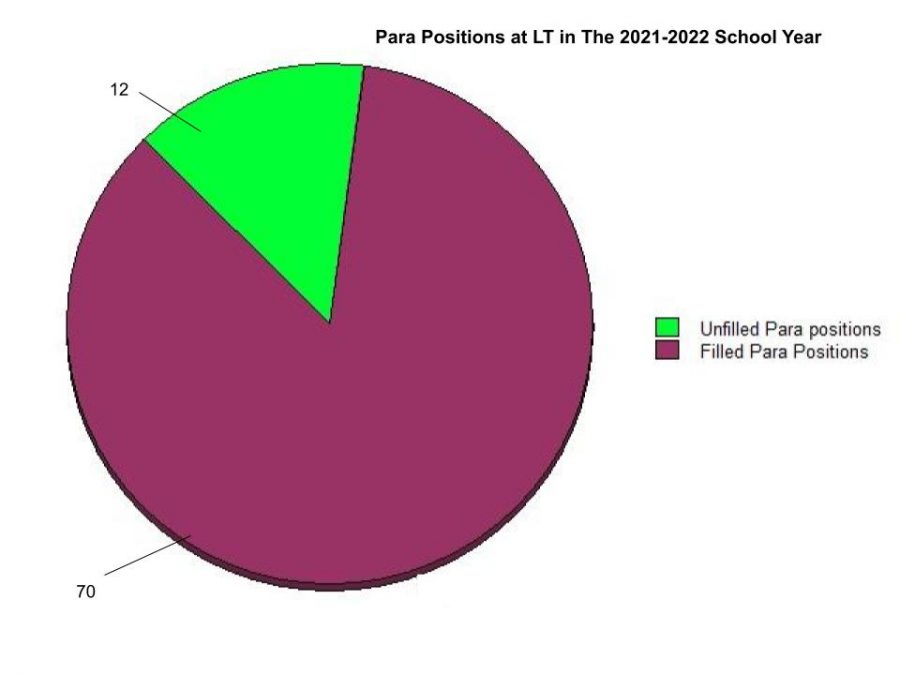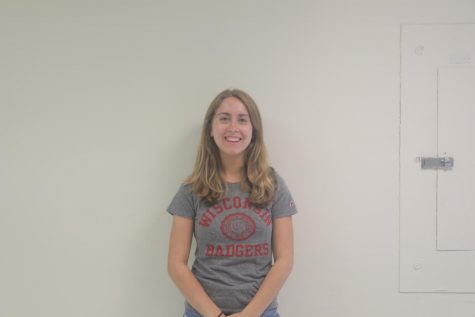Special Ed. endures staff shortages
Department experiences struggles to find paraeducators, substitutes
December 22, 2021
In March of 2020, Special Education teacher Jack Becker noticed a decrease in the amount of paraeducators (paras) in his classes. Now, more than a year later, he is still seeing a shortage of paras in the Special Ed. Department.
With a high rate of turnover at LT, paras have left for many reasons. Paras that once worked at LT now work in different schools or fields altogether.
“I am not entirely sure where the paras went, but I would assume they’ve found work in different fields as many people have done during the pandemic,” Becker said.
Others have taken leave to earn a degree that will help increase their salary. Currently, there are 12 openings for para jobs.
There are 29 Special Ed. classes at LT, and many of them require paras. There are around 70 paras at LT, helping students based on their need. Students’ needs that are documented in an Individualized Education Program (IEP) are filled first and foremost, Director of Student Services Leslie Owens said. Staff shortages have caused paras to be placed in different classrooms or with different students throughout the day, as opposed to them typically staying with the same student throughout the school day. A varied schedule can negatively impact a student with specialized needs, Becker said.
“Students thrive on consistency, especially students with severe disabilities,” Becker said. “Students with severe disabilities get distraught if schedules are changed.”
The Special Ed. Department is also struggling to find substitute teachers, Becker said. This is leading to an increased weight on department teachers. When teachers call in sick, it is often difficult to find a substitute. Staff members who come to work often have different schedules every day, as they try to fill the gap of having one less person.
General education teachers have to adapt to these changes on a daily basis because of this staff shortage, Becker said. Many teachers have modified the way they teach because of the decrease in paras. When Becker has fewer paras in his classroom, he will focus more attention on students who would usually have additional support. That often means sitting next to the student during class, to help them with tasks.
“We’ve worked really hard to ensure that all needs are being met and that the impact [of being understaffed] on students is minimal,” Owens said.
LT is not alone in this struggle; throughout the U.S., schools are being faced with para shortages. In a recent survey of 1,200 schools across the nation, 35% reported a para shortage, making paras the third hardest vacancies to fill, according to Frontline Education. A survey by the Illinois Educator in 2020 revealed that out of 987 Special Ed. K-12 openings, 195 positions remained unfilled, or were filled with unqualified individuals.
The Special Ed. Department is trying to solve the para shortage by publicizing open positions, Owens said. They are encouraging those in the community to promote the open para positions, even if it is just by word of mouth.
“We held a job fair and are reaching out to training programs and colleges, to try to get the word out about our job openings,” Owens said. “There is a shortage of applicants, and we really need more people applying to these positions.”
The openings are also posted on the LT website, where those who are interested can apply. For paras, the starting hourly rate was $16.54 in 2020, as stated in the now expired contract.
Currently, the paras at LT are focusing on negotiating their contract with the administration. At a Nov. 15 board meeting, para Karen DelPorto expressed her opinions about an increase in pay.
“I would ask if you are truly grateful for the groups Dr. [Brian] Waterman mentioned earlier [in this board meeting] that appreciation be shown to support a living wage for our paras,” DelPorto said.
Despite this, LT has hired about three to five paras since the start of the 2021-2022 school year.
Owens has seen the entire special education staff rise to the challenge of being understaffed.
“We’re grateful for the culture of support that exists here,” Owens said. “We are so appreciative that we have so many staff members that are willing to go above and beyond to ensure that our students get what they need.”





















![Movie poster for '[Rec]" (2007).](https://www.lionnewspaper.com/wp-content/uploads/2023/04/rec-640x900.jpg)



